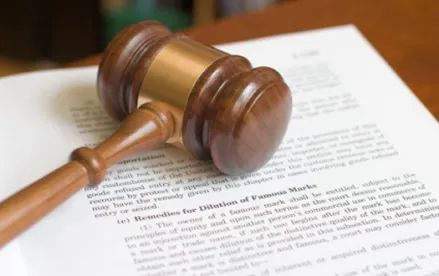The US Court of Appeals for the Ninth Circuit concluded that when a party obtains a declaratory relief finding that it does not infringe a trademark, it no longer has Article III standing to pursue invalidation of the mark. San Diego County Credit Union v. Citizens Equity First Credit Union, Case Nos. 21-55642; -55662; -56095; -56389 (9th Cir. Feb. 10, 2023) (Bea, Ikuta, Christen, JJ.)
Citizens Equity First Credit Union (CEFCU) registered a trademark for the term “CEFCU. NOT A BANK. BETTER,” and further claimed to own a nearly identical common-law trademark for “NOT A BANK. BETTER.” In 2014, San Diego County Credit Union (SDCCU) obtained a registration for “IT’S NOT BIG BANK BANKING. IT’S BETTER.” CEFCU petitioned the Trademark Trial & Appeal Board to cancel SDCCU’s registration, claiming that it covered a mark that was confusingly similar to CEFCU’s registered and alleged common-law marks.
SDCCU sought declaratory relief in the district court seeking a noninfringement finding of CEFCU’s registered and common-law marks, an invalidity finding of CEFCU’s registered and common-law marks, and a finding that CEFCU falsely or fraudulently registered its mark. CEFCU unsuccessfully filed motions to dismiss for lack of personal and subject matter jurisdiction. SDCCU persuaded the district court that during the course of the cancellation proceedings, it became apprehensive that CEFCU would sue SDCCU for trademark infringement. The district court granted SDCCU’s motion for summary judgment on noninfringement and CEFCU’s motion for summary judgment on SDCCU’s fraudulent registration claim. The parties agreed to dismiss the claim that CEFCU’s registered mark was invalid. The only issue remaining was SDCCU’s count seeking declaratory relief to invalidate CEFCU’s common-law mark. After a bench trial, the district court determined that CEFCU’s common-law mark was invalid, entered final judgment and awarded SDCCU attorneys’ fees. CEFCU appealed.
In an appeal that raised a “bevy of issues,” the Ninth Circuit concluded that the district court lacked Article III jurisdiction to invalidate CEFCU’s common-law mark following the grant of summary judgment in favor of SDCCU on its noninfringement claims. Citing the Supreme Court’s 2007 decision in MedImmune v. Genentech and Ninth Circuit precedent, the Ninth Circuit applied the “reasonable apprehension” test to determine whether a controversy exists in a declaratory judgment action regarding trademark infringement. Under this test, a party has standing to seek declaratory relief of noninfringement if the party demonstrates “a real and reasonable apprehension that [the party] will be subject to liability” if the party’s course of conduct continues. Concrete threats of a trademark infringement suit are not required to create live controversy to provide standing to seek declaratory relief action.
The Ninth Circuit concluded that justiciable controversy existed at the pleading stage, pointing to CEFCU’s cancellation petition, CEFCU’s testimony that it was just a “matter of time” before actual confusion occurred in California, and CEFCU’s affirmative refusal to stipulate that SDCCU was not infringing CEFCU’s marks. However, once the district court rendered its declaratory judgment of noninfringement, the record lacked any evidence that an ongoing threat of liability was causing SDCCU to engage in any self-avoidance of harm. At that point there was no reasonable basis for SDCCU to be concerned that CEFCU would file a trademark infringement suit. The Ninth Circuit explained that at that point the district court was no longer resolving an actual “case” or “controversy” regarding the validity of CEFCU’s common-law mark and thus lacked Article III jurisdiction to proceed to trial on that issue. The Court further explained that the still-pending cancellation proceedings were insufficient to create a case or controversy because as soon as SDCCU obtained a declaration of no infringement of CEFCU’s common-law mark, SDCCU lost any personal stake it previously had in invalidating CEFCU’s common-law mark.
Relatedly, the Ninth Circuit explained that its conclusion that the district court lacked jurisdiction to proceed to trial on SDCCU’s invalidity claim did not, by itself, preclude jurisdiction to award attorneys’ fees. In a footnote, the Court rejected CEFCU’s “near-frivolous argument” that a party must prove infringement to be entitled to attorneys’ fees under § 1117(a). The Court remanded with instructions that the district court needed to reassess whether SDCCU remained the prevailing party absent its trial victory and the exceptional-case determination.




 />i
/>i
